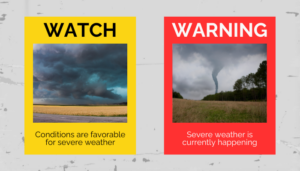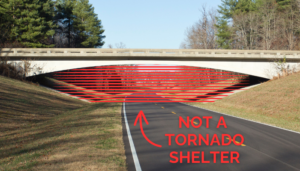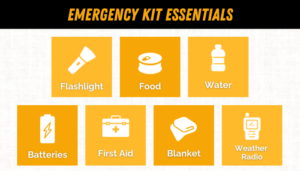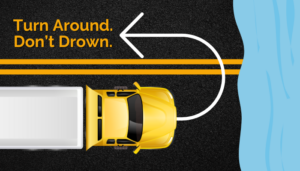In the world of truck driving, the open road offers both freedom and challenges. While the landscape changes, so does the weather, sometimes presenting severe conditions that can pose risks to even the most seasoned drivers. Being prepared and informed is crucial to navigating through storms safely. In this guide, we’ll delve into essential tips for truck drivers to weather severe weather conditions.
Understanding Weather Alerts
First things first: understanding the difference between a watch and a warning can be a lifesaver. A “watch” means that conditions are favorable for severe weather, while a “warning” means that severe weather is imminent or already occurring. When you hear a warning, it’s time to take immediate action to protect yourself and your cargo. When life-threatening weather is imminent, you may hear the outdoor warning sirens alerting you that such weather is on the way.
Avoiding Overpass Bridges
During severe weather, it may be tempting to seek shelter under overpass bridges. However, this can be extremely dangerous. Overpasses can create wind tunnels, intensifying the storm’s force and increasing the risk of debris. Instead, seek sturdy shelter away from the highway, such as a nearby building or designated storm shelter.
Utilizing NOAA Weather Stations
The National Oceanic and Atmospheric Administration (NOAA) operates a network of weather stations across the country, providing up-to-date information on weather conditions. Before hitting the road, check the NOAA weather forecast for your route. Stay tuned to weather updates throughout your journey, especially if severe weather is forecasted.
Emergency Preparedness Kit
Every truck should be equipped with an emergency preparedness kit. This kit should include essentials such as non-perishable food, water, a flashlight, batteries, a first aid kit, a blanket, and a portable weather radio. Additionally, consider carrying items specific to severe weather situations, such as road flares, reflective vests, and a multipurpose tool.
Turn Around, Don’t Drown
One of the most significant hazards during severe weather is flooding. Never attempt to drive through flooded roads, as it only takes a few inches of water to sweep away a vehicle. Remember the mantra: “Turn around, don’t drown.” Find an alternate route or wait until floodwaters recede before proceeding safely.
As a truck driver, your safety and the safety of others on the road depend on your ability to navigate through severe weather conditions. By understanding weather alerts, avoiding dangerous shelter options, utilizing NOAA weather stations, maintaining an emergency preparedness kit, and adhering to flood safety protocols, you can minimize risks and ensure a safer journey. Stay informed, stay prepared, and stay safe out there on the road.



